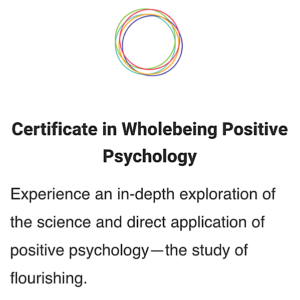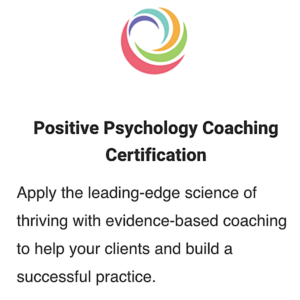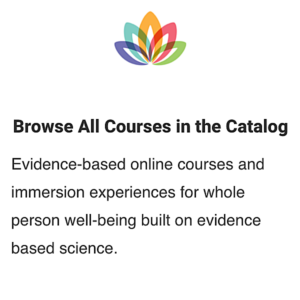by Louis Cinquino
What emotions are most difficult for you? According to Pema Chödrön, it is in those emotions that we find the seeds of wisdom we most need in our lives.
Earlier this year, I attended a retreat with her entitled “Three Steps to Courage: Working Compassionately with Difficult Emotions.” I’m taking a few posts to explain what I learned in hopes that you can apply some of these lessons in your life and with your positive psychology clients.
Previous posts in this series:
“Working Compassionately with Difficult Emotions: My Time with Pema Chödrön”
“REFRAIN: Your First Step to Courage Means More Than Just Counting to 10”
In this post, we’ll look at Step Two: TRANSFORM the emotions without judging them.
What do we do as we sit with the difficult emotions? The work is to recognize their inherent wisdom and explore their contours.
For example, consider the emotions that surround spending time by yourself.
Do you experience that as loneliness or as aloneness? Loneliness brings up feelings of sadness, maybe regret, isolation. Whereas aloneness can be a valuable, peaceful state, giving you the space to be yourself while still feeling connected to life and the living. The difference between the two might merely be the storyline that you’ve bought into about spending time alone—and whether you dive into that storyline or refrain from reacting to it.
When we refrain, we hit the pause button, interrupting the storylines that urge us to escape from the difficult emotion. In step two, we move on to transforming—kind of like hitting the slow-mo button. We connect with the emotion and examine it with tenderness.
Feel it. Accept it. This frees us from reactivity and makes our emotions more accessible to us. We’re not going to dwell inside the depth of the feeling, but we do need to acknowledge it to relieve our fear of it.
Going back to our example, when feelings of loneliness arise, we first catch the “hook” of the emotion by acknowledging the feeling. Then we interrupt the storyline of that emotion and refrain from acting to escape from—or go too deeply into—that emotion.
Instead, we stay with the emotion and increase the spaciousness around it, so we come to a cooler, more detached acceptance of it—rather than picking a fight with it. We safely acknowledge feeling lonely, then wrap that feeling in a blanket made of other aspects of our life where we feel connected, even when alone.
It can be frustrating to have difficult emotions come up time and time again, derailing us from more pleasant thoughts or activities. Yet that time spent simply being with the difficult feelings is necessary in order to gain access to the wisdom of that emotion.
Here are three ways to start extracting that wisdom in ways that blow away our preconceived notions of how we identify with our emotions.
1. Shift a nebulous feeling to a more physical, tangible, sensory one.
This can be done with a little game that Pema described, which could be called “Qualities.” Take the feeling and start to describe it using questions like:
If this feeling were a color, what color would it be?
If this feeling were a temperature, what temperature would it be?
If this feeling were music, what kind of music would it be?
Continue with other qualities, like sound, touch, a piece of art, a genre of movie, a pair of shoes, a famous person, food, etc. Don’t worry about being so precise about the description—just name what comes to mind when you start to hold it in these ways.
2. Shrink the difficult emotion by seeing it as something tiny that’s being consumed by an ever-expanding perspective.
This way, you’re not fighting to eliminate the emotion—you’re just understanding it as a small piece of a larger sense of your self and your place in the world. You can think of that difficult emotion as
A tiny drop of water being consumed by the oceans of the world
A single bead of sand losing itself in the beaches and deserts of our planet, among all the planets
A tiny speck of light disappearing among the stars of the galaxy, among all galaxies.
In this way, you blow away the notion that this emotion defines your identity—it is merely one of emotions you can safely experience in a rich and diverse life.
This is now my favorite meditation when difficult emotions arise. For me, it’s helpful to visualize how miniscule that emotion is within me, much like this video simulates the mind-blowing scale of our physical world and our place within it.
3. Work with the emotion through a guided Tonglen meditation—the lovingkindness meditations for which Pema Chödrön is well known.
Through these meditations, we expand our perspectives from ourselves to all beings, and with this expansion, we wish for happiness and love to come not only to us, but also to all.
Here’s a short excerpt from one of her guided Tonglen meditations.
Trying to repress a “bad” feeling doesn’t work, because that feeling gets so much attention that it ends up governing the rest of our emotions. It’s like trying to keep the emotion in a cage, where it rattles around and reminds us of its desire to break free and threaten us. Every day, we have to vigilantly check it to make sure the lock is in place and the cage is secure.
That emotion, as harmful as it may be to us, has a place in our lives—but it’s not healthy to have it stalking our minds day and night. It’s more useful to let that emotion roam wild on a wide and expansive terrain, where it can live on its own but not threaten and constantly bother us where we live.
When it is set free, there’s no need to kill that emotion or flee from it, for it is no longer an imminent threat to us. It’s a small animal roaming far and wide across the entire continent.
Next week, in my final post about the retreat, I’ll share with you my understanding of how refraining and reframing culminates in unlocking the wisdom of our emotions. That’s Step Three: AWAKEN through being in direct experience of those emotions, which hold the wisdom of our shared humanity.
Louis Cinquino is a writer, editor, runner, dad, and graduate of CiPP4. His personal observations, discoveries, and training plan as he prepared for the Fifth Avenue Mile race were featured in “The Mulligan Mile,” (Runners World, September 2013). The article forms the basis of his memoir, currently awaiting publication. He also develops online advertising and has worked with Wholebeing Institute to promote its website and course enrollment. You can read more from Louis on his blog, TakingMulligans.com.


 Louis Cinquino is a writer, editor, runner, dad, and graduate of CiPP4. His personal observations, discoveries, and training plan as he prepared for the Fifth Avenue Mile race were featured in “The Mulligan Mile,” (Runners World, September 2013). The article forms the basis of his memoir, currently awaiting publication. He also develops online advertising and has worked with Wholebeing Institute to promote its website and course enrollment. You can read more from Louis on his blog,
Louis Cinquino is a writer, editor, runner, dad, and graduate of CiPP4. His personal observations, discoveries, and training plan as he prepared for the Fifth Avenue Mile race were featured in “The Mulligan Mile,” (Runners World, September 2013). The article forms the basis of his memoir, currently awaiting publication. He also develops online advertising and has worked with Wholebeing Institute to promote its website and course enrollment. You can read more from Louis on his blog, 


